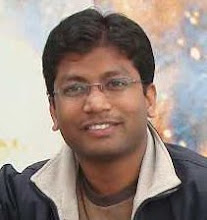If you don’t have a plan (goals) for what you want, then you will probably find yourself buying into someone else’s plan and later find out that wasn’t the direction you wanted to go. You’ve got to be the architect of your life… - Jim Rohn, Philosopher
Strategy: Sometimes defined as a plan and sometimes as a future goal… Being strategic means being an active force in creating and shaping your future. Hence, strategy is very personal. It boils down to seeing the future and creating choices for yourself. Being strategic means having the desire and capability to help create the future of your choosing and not limiting yourself to forces and dynamics that act upon you. The whole point is that you can be more effective if you look to the future and think about where you are headed and what you want to accomplish.
ZONE1: Operator (Time - Present, Imagination - Narrower) – Expedient, Efficient, Reactive…
ZONE2: Planner (Time - Future, Imagination - Narrower) – Anticipate, Prepare, Preempt…
ZONE3: Inventor (Time - Present, Imagination - Broader) – Discover, Improve, Refine…
ZONE4: Strategist (Time - Future, Imagination - Broader) – Innovative, Entrepreneurial, Proactive…
Applied strategic thinking has the following characteristics:
Practical: It is a thought process that can be applied to any job and can be used to examine our role and projects with the goal of becoming better equipped in the future to deliver exceptional results. Applied strategic thinking is not designed for exclusive use by senior leaders or for the annual corporate planning event. However, applied strategic thinking should help support and be aligned with “grand” corporate strategy.
Personalized: We can and should think like a business. In fact, we are a business, albeit small. If we are to maintain a competitive edge, we must personally take responsibility to adapt to the future, bring maximum value to our function, and outperform others who occupy similar positions in competing organizations. Remember, the timeline or size of the strategic task is irrelevant; the key is that we are thinking ahead (even a little bit helps).
Simple: Strategy at a personal level doesn’t have to be a complex, daunting exercise. A few principles and concepts can be kept in mind and be used collectively or individually. We are not talking about a huge formal process, although there are some helpful tools and a road map to help you put the process down on paper. In reality, many strategic thoughts that enter your mind will be unexpected, sudden, and very natural as you begin to tune into the whole idea and discover that strategy is for you as well as for corporations, the military, or the government.
Future Focused: It seems like nearly everything you do is evaluated on immediate results or payoff. With applied strategic thinking, you are concerned with getting better positioned to deliver outstanding results in the future. The future is a very relative concept; so strategic thinking can be focused on the next week or next year, such as the next step of a project, your next personal development move, or your preparation to take advantage of new technology coming your way.
Aligned: Even though applied strategic thinking is very grass roots, it can and should be aligned with strategy coming down from the top. If strategy isn’t being formulated at the top, it is even more important that you attempt to establish some direction and put some strategic targets in your sights so you are nit caught off guard by disruptive forces that can threaten corporations as well as individuals.
Emerging: Applied strategic thinking is simply figuring out what you need to do before you need to do it. This means you stay alert for incoming information and signals to help you anticipate. Strategic thinking at any level means being an active agent in the way the future unfolds and not sitting back until the future hits you between the eyes. It usually doesn’t come as a big bold stroke of genius; it often emerges very incrementally and very intuitively. You need to tune into the data and intuition when it hits, and then muster the courage to take pre-emptive action before it seems obvious or logical to others. If you wait until you have no choice about your course of action, you have not seized the opportunity to be proactive.
Cultivating success means thinking ahead and involves seven essential strategic skill sets. These seven skills can be used separately (as stand-alone skills), or you can link them together and create a top-to-bottom process.
Tame the Beast: Develop habits and skills that will strengthen a strategic mind:
Be curious, Be self-motivated, Be reflective and dream, Be playful with ideas, Be collaborative, Be flexible, Seek out knowledge and information, Observe and study others who operate strategically, Find a mentor who helps you think and who asks tough questions, Go on a learning journey
Acquire the Target: Look for the following strategic dashboard: Customers, People, Products, Resources, Processes, You, Sponsors/Stakeholders.
We should have a C.L.E.A.R target.
· C = Controllable
· L = Linked
· E = Energizing
· A = Actionable
· R = Result Oriented
Gather Intelligence:
Analyze the Forces:
Define Scenarios:
Chart a Course:
Mobilize and Sustain: Principles: Overcome fear of failure, Take incremental steps, Make a commitment, Pick up speed, Be responsive, Demonstrate resolve, Instill teamwork

No comments:
Post a Comment